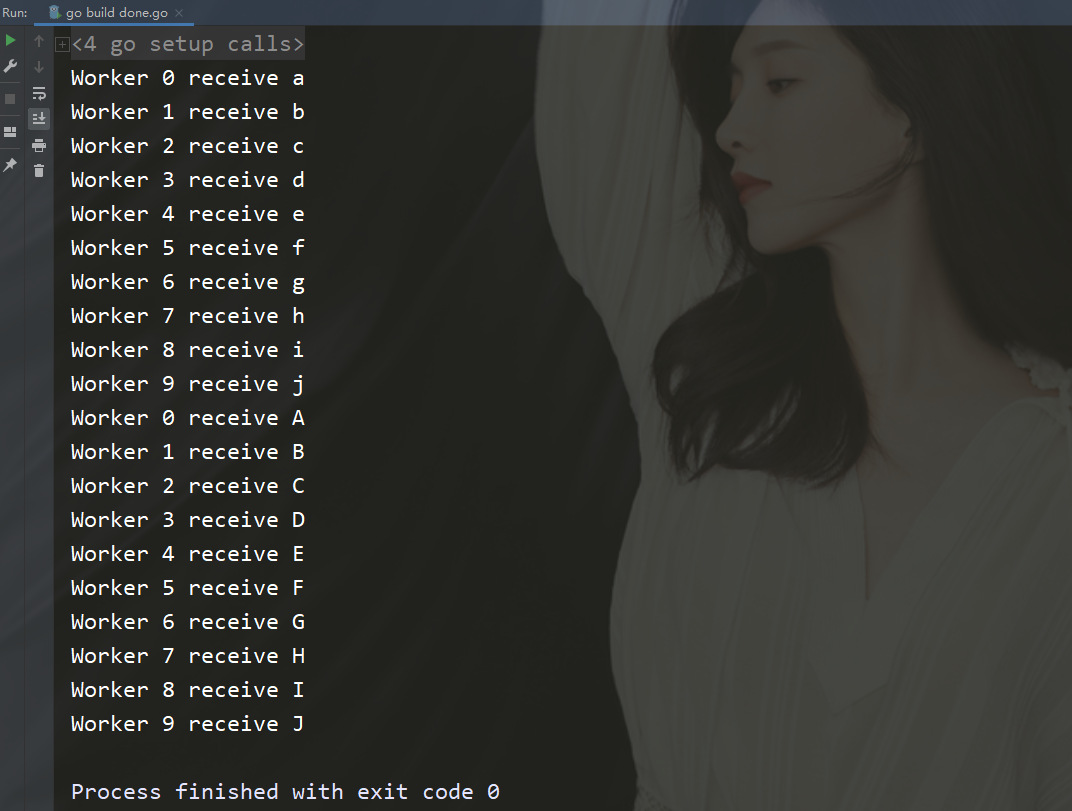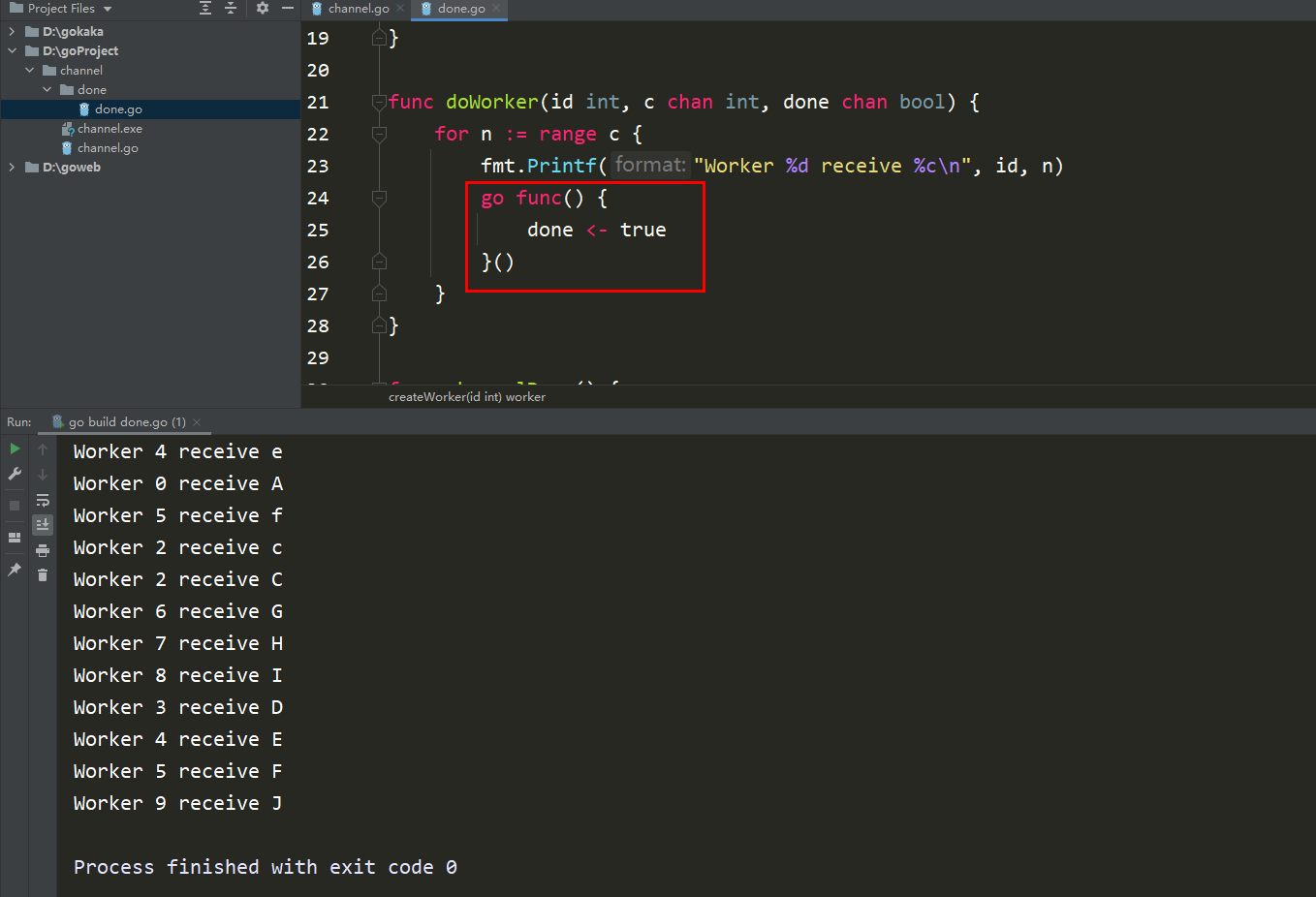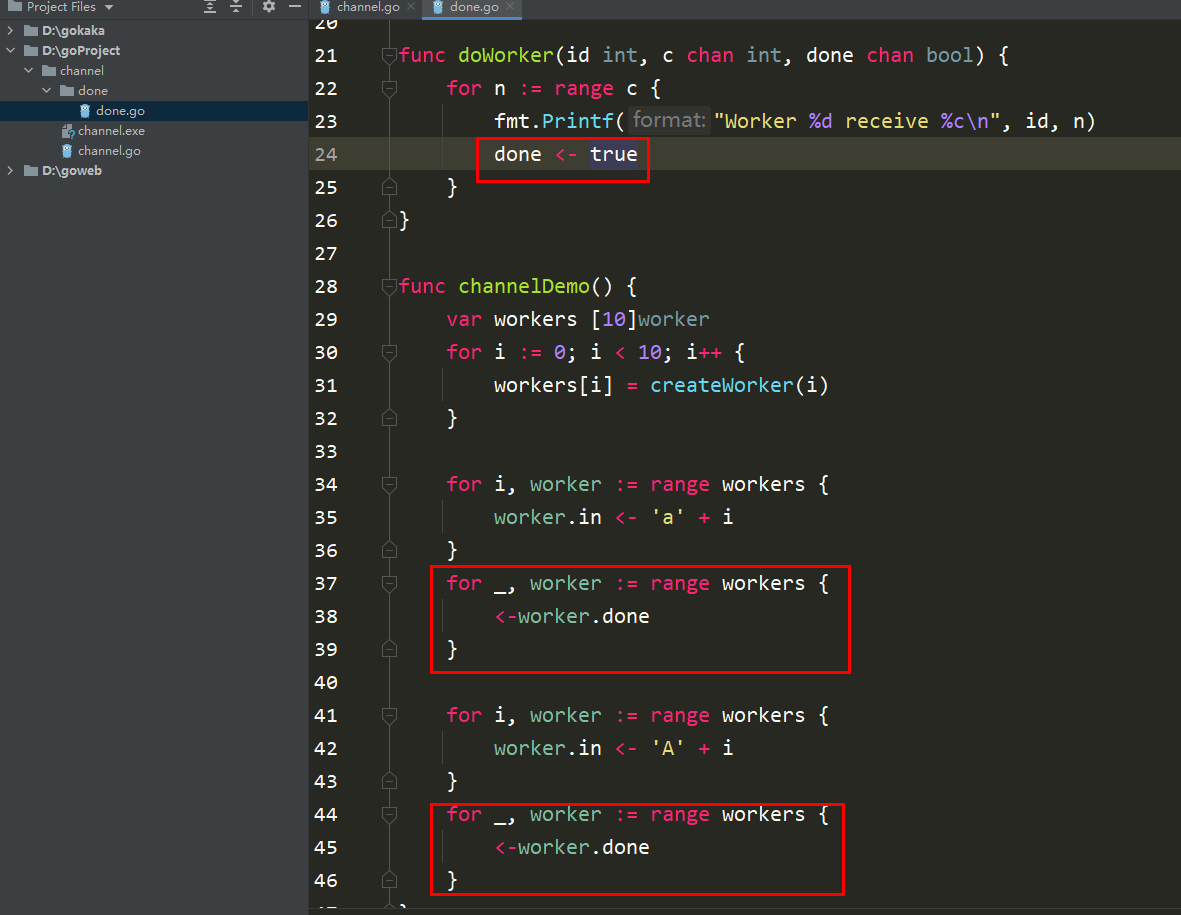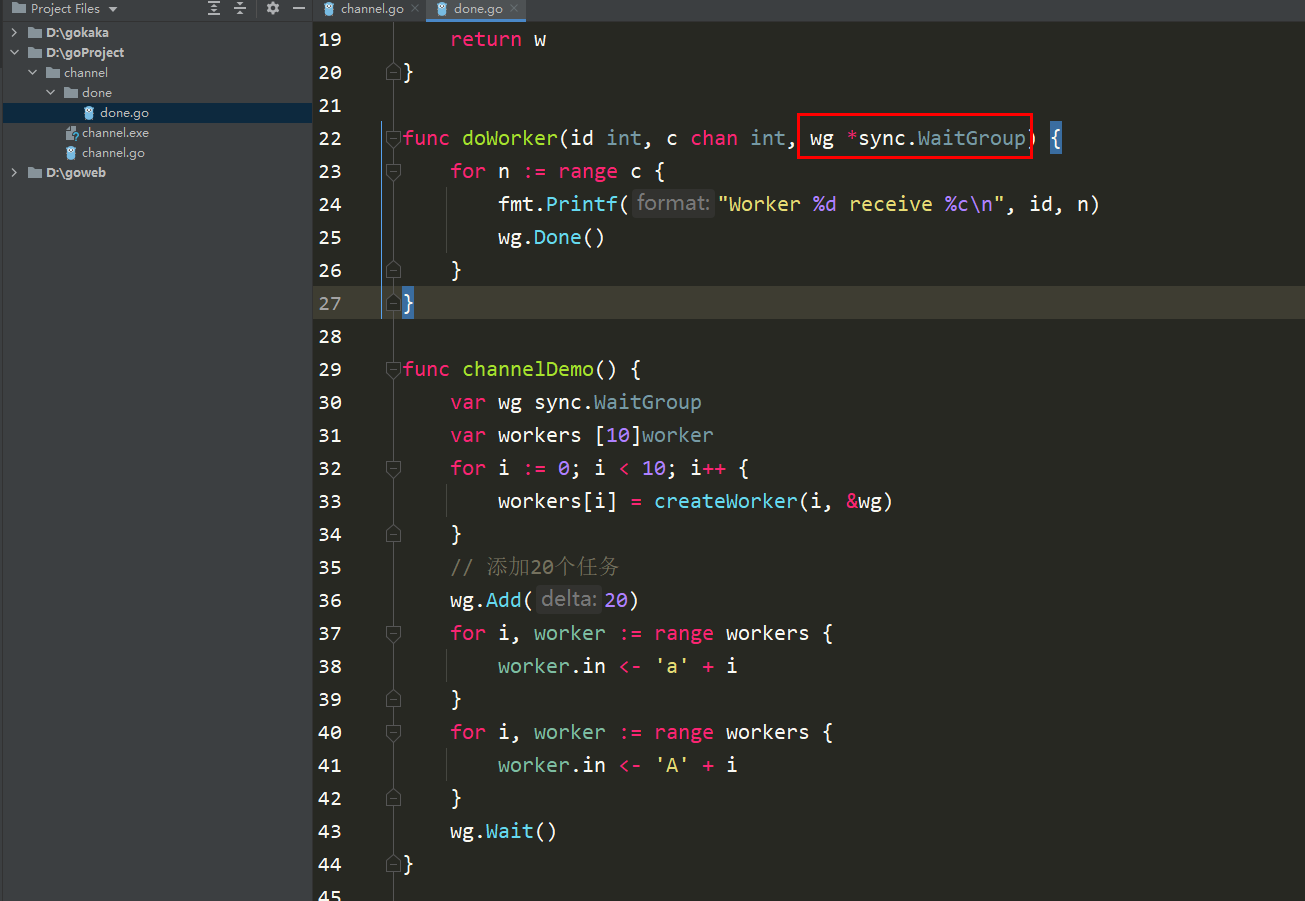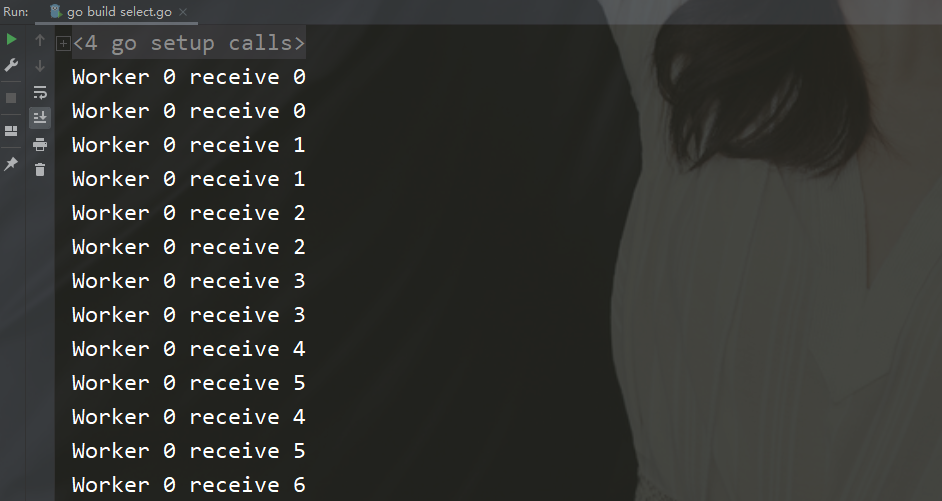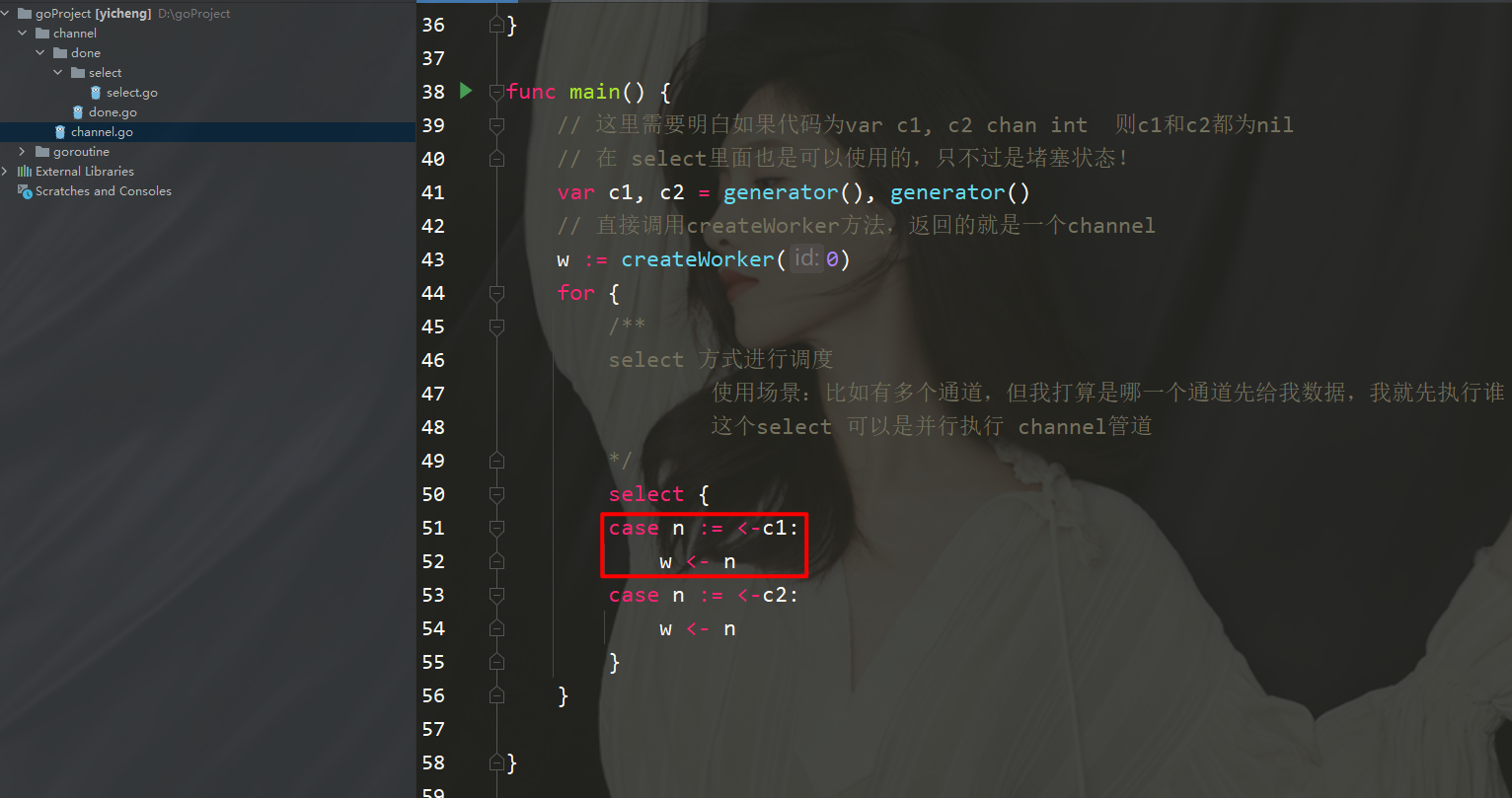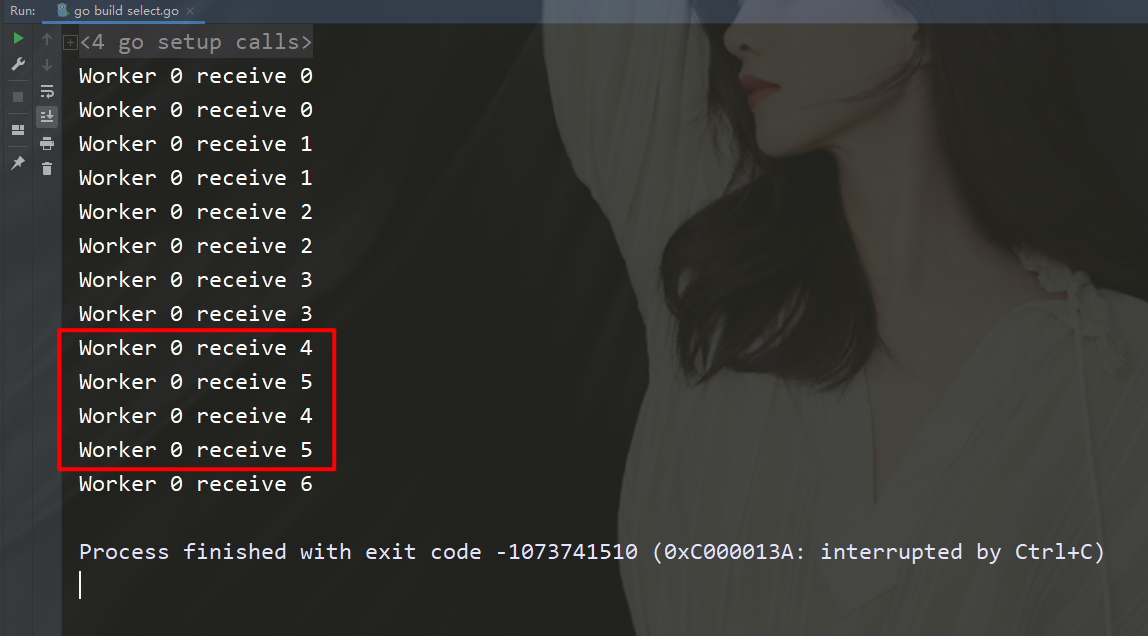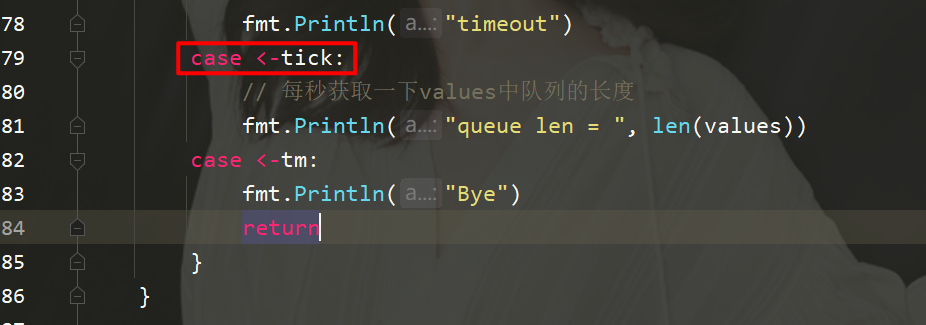Let's talk about concurrent programming in Go (2)
Let’s talk about Go’s goroutine and Channel
Recommended related articles: "Talk about concurrent programming in Go (1)"
1. Use channel to wait for the task to end
package mainimport ( "fmt" "time")func createWorker(id int) chan
package mainimport (
"fmt")type worker struct {
in chan int
done chan bool}func createWorker(id int) worker {
w := worker{
in: make(chan int),
done: make(chan bool),
}
go doWorker(id, w.in, w.done)
return w}func doWorker(id int, c chan int, done chan bool) {
for n := range c {
fmt.Printf("Worker %d receive %c\n", id, n)
done package mainimport (
"fmt")type worker struct {
in chan int
done chan bool}func createWorker(id int) worker {
w := worker{
in: make(chan int),
done: make(chan bool),
}
go doWorker(id, w.in, w.done)
return w}func doWorker(id int, c chan int, done chan bool) {
for n := range c {
fmt.Printf("Worker %d receive %c\n", id, n)
done package mainimport (
"fmt"
"sync")type worker struct {
in chan int
wg *sync.WaitGroup}func createWorker(id int, wg *sync.WaitGroup) worker {
w := worker{
in: make(chan int),
wg: wg,
}
go doWorker(id, w.in, wg)
return w}func doWorker(id int, c chan int, wg *sync.WaitGroup) {
for n := range c {
fmt.Printf("Worker %d receive %c\n", id, n)
wg.Done()
}}func channelDemo() {
var wg sync.WaitGroup var workers [10]worker for i := 0; i package mainimport (
"fmt"
"sync")type worker struct {
in chan int
done func()}func createWorker(id int, wg *sync.WaitGroup) worker {
w := worker{
in: make(chan int),
done: func() {
wg.Done()
},
}
go doWorker(id, w)
return w}func doWorker(id int, w worker) {
for n := range w.in {
fmt.Printf("Worker %d receive %c\n", id, n)
w.done()
}}func channelDemo() {
var wg sync.WaitGroup var workers [10]worker for i := 0; i package mainimport (
"fmt"
"math/rand"
"time")func generator() chan int {
out := make(chan int)
go func() {
i := 0
for {
// 随机睡眠1500毫秒以内
time.Sleep(
time.Duration(rand.Intn(1500)) *
time.Millisecond)
// 往out这个channel发送i值
out package mainimport (
"fmt"
"math/rand"
"time")func worker(id int, c chan int) {
for n := range c {
fmt.Printf("Worker %d receive %d\n", id, n)
}}func createWorker(id int) chanpackage mainimport (
"fmt"
"math/rand"
"time")func worker(id int, c chan int) {
for n := range c {
fmt.Printf("Worker %d receive %d\n", id, n)
}}func createWorker(id int) chanpackage mainimport (
"fmt"
"math/rand"
"time")func worker(id int, c chan int) {
for n := range c {
// 手动让消耗速度变慢
time.Sleep(5 * time.Second)
fmt.Printf("Worker %d receive %d\n", id, n)
}}func createWorker(id int) chan 0 {
activeWorker = worker // 取出索引为0的值
activeValue = values[0]
}
/**
select 方式进行调度
使用场景:比如有多个通道,但我打算是哪一个通道先给我数据,我就先执行谁
这个select 可以是并行执行 channel管道
*/
select {
case n := package mainimport (
"fmt"
"math/rand"
"time")func worker(id int, c chan int) {
for n := range c {
// 手动让消耗速度变慢
time.Sleep(time.Second)
fmt.Printf("Worker %d receive %d\n", id, n)
}}func createWorker(id int) chan 0 {
activeWorker = worker // 取出索引为0的值
activeValue = values[0]
}
/**
select 方式进行调度
使用场景:比如有多个通道,但我打算是哪一个通道先给我数据,我就先执行谁
这个select 可以是并行执行 channel管道
*/
select {
case n := package mainimport (
"fmt"
"math/rand"
"time")func worker(id int, c chan int) {
for n := range c {
// 手动让消耗速度变慢
time.Sleep(time.Second)
fmt.Printf("Worker %d receive %d\n", id, n)
}}func createWorker(id int) chan 0 {
activeWorker = worker // 取出索引为0的值
activeValue = values[0]
}
/**
select 方式进行调度
使用场景:比如有多个通道,但我打算是哪一个通道先给我数据,我就先执行谁
这个select 可以是并行执行 channel管道
*/
select {
case n := The above is the detailed content of Let's talk about concurrent programming in Go (2). For more information, please follow other related articles on the PHP Chinese website!

Hot AI Tools

Undresser.AI Undress
AI-powered app for creating realistic nude photos

AI Clothes Remover
Online AI tool for removing clothes from photos.

Undress AI Tool
Undress images for free

Clothoff.io
AI clothes remover

Video Face Swap
Swap faces in any video effortlessly with our completely free AI face swap tool!

Hot Article

Hot Tools

Notepad++7.3.1
Easy-to-use and free code editor

SublimeText3 Chinese version
Chinese version, very easy to use

Zend Studio 13.0.1
Powerful PHP integrated development environment

Dreamweaver CS6
Visual web development tools

SublimeText3 Mac version
God-level code editing software (SublimeText3)

Hot Topics
 1389
1389
 52
52
 How to send Go WebSocket messages?
Jun 03, 2024 pm 04:53 PM
How to send Go WebSocket messages?
Jun 03, 2024 pm 04:53 PM
In Go, WebSocket messages can be sent using the gorilla/websocket package. Specific steps: Establish a WebSocket connection. Send a text message: Call WriteMessage(websocket.TextMessage,[]byte("Message")). Send a binary message: call WriteMessage(websocket.BinaryMessage,[]byte{1,2,3}).
 In-depth understanding of Golang function life cycle and variable scope
Apr 19, 2024 am 11:42 AM
In-depth understanding of Golang function life cycle and variable scope
Apr 19, 2024 am 11:42 AM
In Go, the function life cycle includes definition, loading, linking, initialization, calling and returning; variable scope is divided into function level and block level. Variables within a function are visible internally, while variables within a block are only visible within the block.
 How to match timestamps using regular expressions in Go?
Jun 02, 2024 am 09:00 AM
How to match timestamps using regular expressions in Go?
Jun 02, 2024 am 09:00 AM
In Go, you can use regular expressions to match timestamps: compile a regular expression string, such as the one used to match ISO8601 timestamps: ^\d{4}-\d{2}-\d{2}T \d{2}:\d{2}:\d{2}(\.\d+)?(Z|[+-][0-9]{2}:[0-9]{2})$ . Use the regexp.MatchString function to check if a string matches a regular expression.
 The difference between Golang and Go language
May 31, 2024 pm 08:10 PM
The difference between Golang and Go language
May 31, 2024 pm 08:10 PM
Go and the Go language are different entities with different characteristics. Go (also known as Golang) is known for its concurrency, fast compilation speed, memory management, and cross-platform advantages. Disadvantages of the Go language include a less rich ecosystem than other languages, a stricter syntax, and a lack of dynamic typing.
 How to avoid memory leaks in Golang technical performance optimization?
Jun 04, 2024 pm 12:27 PM
How to avoid memory leaks in Golang technical performance optimization?
Jun 04, 2024 pm 12:27 PM
Memory leaks can cause Go program memory to continuously increase by: closing resources that are no longer in use, such as files, network connections, and database connections. Use weak references to prevent memory leaks and target objects for garbage collection when they are no longer strongly referenced. Using go coroutine, the coroutine stack memory will be automatically released when exiting to avoid memory leaks.
 How to view Golang function documentation in the IDE?
Apr 18, 2024 pm 03:06 PM
How to view Golang function documentation in the IDE?
Apr 18, 2024 pm 03:06 PM
View Go function documentation using the IDE: Hover the cursor over the function name. Press the hotkey (GoLand: Ctrl+Q; VSCode: After installing GoExtensionPack, F1 and select "Go:ShowDocumentation").
 A guide to unit testing Go concurrent functions
May 03, 2024 am 10:54 AM
A guide to unit testing Go concurrent functions
May 03, 2024 am 10:54 AM
Unit testing concurrent functions is critical as this helps ensure their correct behavior in a concurrent environment. Fundamental principles such as mutual exclusion, synchronization, and isolation must be considered when testing concurrent functions. Concurrent functions can be unit tested by simulating, testing race conditions, and verifying results.
 Things to note when Golang functions receive map parameters
Jun 04, 2024 am 10:31 AM
Things to note when Golang functions receive map parameters
Jun 04, 2024 am 10:31 AM
When passing a map to a function in Go, a copy will be created by default, and modifications to the copy will not affect the original map. If you need to modify the original map, you can pass it through a pointer. Empty maps need to be handled with care, because they are technically nil pointers, and passing an empty map to a function that expects a non-empty map will cause an error.




